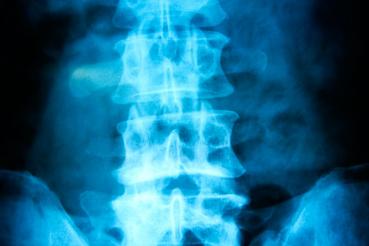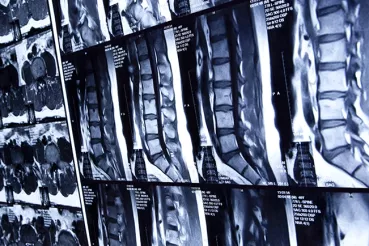Keys to recognizing and recovering from whiplash
Each year, more than two million Americans experience whiplash. Also called a neck strain or sprain, it occurs when the head suddenly snaps forward, then backward — a whip-like motion that overstretches the joints, muscles and ligaments of the neck and upper back.
Here are five things you may not know about this well-known injury.
1. You don't have to be in a car to get whiplash.
While the most common cause of whiplash is front- or rear-impact car accidents, the injury can actually happen anytime, according to Vincent Traynelis, MD, a neurosurgeon at Rush University Medical Center. You can get whiplash from a fall, or from high-impact sports, such as snowboarding, skiing, boxing, football or gymnastics.
2. It doesn't take a lot of force.
In fact, many whiplash injuries from vehicle accidents occur at speeds as low as five to 10 mph.
The severity of the injury often depends on whether you are properly restrained, which is why anyone riding in a vehicle should wear a seat belt or be secured in a size-appropriate child safety seat.
3. Aging increases the risk of whiplash injuries.
Older people, and those who already have neck problems such as arthritis, may experience more serious whiplash than a younger person.
As people get older, their movement is more limited, their muscles lose flexibility and strength, and their discs and ligaments are not as stretchy. So when their neck whips back and forth, there’s more potential for damage.
4. You shouldn't shrug off symptoms.
Although neck pain is common immediately after a whiplash injury, some people don’t experience pain until a few hours, days or even weeks later. A later onset of symptoms doesn’t indicate a more serious injury, but regardless of when pain starts, don’t ignore it.
“Neck pain following even minor mishaps should be evaluated at your doctor’s office or the emergency room,” Traynelis says. “Imaging tests, such as x-rays, are often important during an initial exam to make sure there are no fractures or dislocations.”
In most cases, the pain will fade on its own within a month. If it persists or worsens or if you develop other symptoms — such as headaches, fatigue, shoulder pain, blurred vision, dizziness, or difficulty concentrating, sleeping or swallowing — see your doctor for further evaluation.
Resting for more than a few days [after a whiplash injury] can cause the muscles in your neck, shoulders and back to get stiff and weak — and actually prolong the pain.
5. When it comes to whiplash, rest equals rust.
You may not want to move around after a whiplash injury for fear of making the pain worse. But resting for more than a few days can cause the muscles in your neck, shoulders and back to get stiff and weak — and actually prolong the pain.
To keep your neck healthy and flexible, Traynelis recommends returning to normal activity as soon as your doctor says it’s OK. Your doctor may also prescribe physical therapy to help alleviate symptoms and recondition the muscles.
“Even if you have to ease into activity slowly,” he says, “don’t let pain, or fear of pain, keep you from getting on with your life.”




